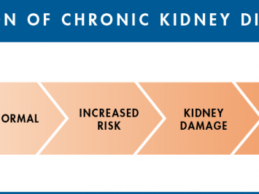We can safely take for granted that a doctor treating your back pain isn’t going to determine the course of care based on whether she thinks you’ll fully commit to getting better. She isn’t likely to start treatment with a contract stating that the only way to stay in treatment is to commit to doing everything she requires and reaching total recovery. She isn’t going to set arbitrary parameters for how fast you should recover.
It’s also safe to assume that your quest to get care for back pain
Read More
The Science of Storytelling: Brand Voice and the COVID-19 Vaccine
Healthcare feels like it’s in a perpetual state of a renaissance.
A decade ago, it seemed it was hardly spoken about at all. People either had it and never thought about it, or lived without it, and worried about it constantly. According to Gallup’s “Confidence in Institutions Study,” 80 percent of Americans trusted the medical system in the 1970s. By 2015, it had fallen to 37 percent.
In the era of COVID-19, people are more distrustful than ever, but we appear to have
Read More
Hospitals Can Teach Life Science Companies a Thing or Two About Patient Engagement
The efforts to develop a COVID-19 vaccine focused the world’s attention on the pharmaceutical industry. Before the pandemic hit, very few people outside of the healthcare industry understood what it takes to develop a new drug. Nor did they consider the complexities of administering the various medications that require a regimen that goes beyond “take one pill each morning.”
The biopharmaceutical industry is massive, accounting for more than $1.3 trillion in economic output, representing four
Read More
RCM: How Coding Gray Areas Skew Healthcare Data
Clinical reality, the ICD-10-CM classification system, and considerations of reimbursement are three distinct worlds that are sometimes in conflict. We don’t like it when financial considerations intrude on the purity of coding, but there’s no escaping this intrusion when coding serves as both the representation of the clinical picture in healthcare data and as the basis for reimbursement.
Sepsis Definitions at Odds
Sepsis provides a great illustration of a coding gray area that can
Read More
AI + Human Intelligence — A More Effective Solution for the Healthcare Payment Lifecycle
Much has been written about the advent of Artificial Intelligence (AI) in the healthcare payment lifecycle, but has it been oversimplified? The straightforward answer is yes.
Many articles have characterized AI as the end-means antidote that will solve all revenue cycle management (RCM) issues and easily streamline the reimbursement process from beginning to end. In fact, many of the products in today’s marketplace promise a complete solution based almost entirely on AI. But, looking at this
Read More
Surprise! Patient Engagement is About the Individual
It’s well understood that patient engagement leads to better outcomes. A powerful way to boost engagement is by delivering a personalized care experience so that patients can manage their condition in a way that best aligns with their lifestyle and goals.
Two of the most effective patient engagement initiatives include: 1) clinicians spending more time with patients and, 2) shared decision making. Although clinicians would prefer more face-to-face time with patients to better assess their
Read More
Will U.S. Healthcare Have The Same Success Rate With Chronic Kidney Disease As Native Americans?
For years, hypertension has dominated the healthcare field, afflicting 45 percent of all adult Americans, inducing a number of lethal complications in patients across the country. Another disease that has gained renown in the world of healthcare is diabetes, afflicting 10.5 percent of the U.S. population with its own complications.
Healthcare professionals have allocated untold assets in the form of time, money, and personnel to minimize the impact such diseases pose yet the relative
Read More
Data Reveals Institutional Racism in Healthcare Still Exist, But Providers/Payers Can Change That
The vaccine rollout is following patterns that are all too familiar -- but we can change that
Newscasters sounded surprised when they announced for the first time that COVID-19 was disproportionately affecting Black, Indigenous, and people of color. As they presented graphs that showed higher rates of infection, hospitalization, and death, their tone was one of mild shock.
Similar surprise-- and similar graphs-- returned when they reported on the slowed, uneven vaccine rollout in poorer
Read More
KLAS: Growth of Drug Diversion Monitoring Market
Often when we talk about the opioid epidemic, the focus is rightly on the suffering that the situation has caused. However, it’s important not to miss the surrounding context of this crisis, and what various health systems have started to uncover.
Currently, health systems face a huge challenge in tracking and managing their controlled substances. One of the technology-based solutions to the problem is drug diversion monitoring systems, which KLAS reported on in a recent report. While
Read More
The Role of Digital Mental Health in the Healthcare Journey
With more than 20,000 apps available to address myriad mental health challenges with varying degrees of support, it’s clear that digital mental health is experiencing a boom. But there seems to be little consensus regarding the true role that digital therapeutics can and should play within the greater context of a patient’s mental health care journey. In order to better articulate this role, we need to take a person-centered view and understand how digital therapeutics can help people not just
Read More











